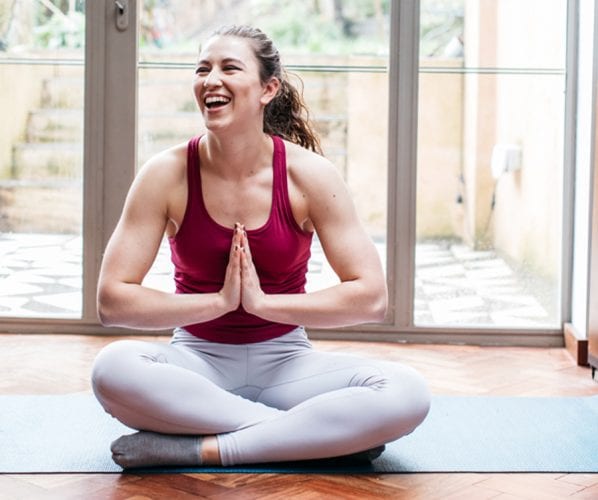How to reduce period pain and cramps
For many of us period pain and cramps are part of our normal monthly cycle, to varying degrees; some will experience a dull ache while others suffer severe pain and then; there are the lucky few who experience neither.
Our periods can also vary, meaning that some months we experience pain and other months are pain free.
Getting to know our menstrual cycle can help us understand whether we simply need to reach for the hot water bottle or seek medical advice.
Everything you need to know about painful periods and how to reduce period pain and cramps
What causes period pain (Dysmenorrhea)?
Period pain, also known as Dysmenorrhea, occurs as the muscular wall of the uterus (womb) tightens and contracts.
Like any muscle, your uterus will be contracting and relaxing a little throughout your menstrual cycle, but these contractions are often so mild they are barely noticeable. However, during your period, as the uterus begins to shed its endometrial lining, the contractions of the uterus will become more vigorous due to the release of hormone-like substances called prostaglandins (they can also contribute to the nausea and diarrhoea some of us experience at this time).
These contractions enable your uterus to shed its thickened endometrial lining effectively and travel down through your cervix (neck of the womb) and vagina resulting in your menstrual flow or period. As your uterus is contracting, the blood vessels lining your womb are compressed, momentarily cutting off the blood and oxygen supply to your uterus before it relaxes again. The temporary lack of oxygen causes the tissue of the uterus to release chemicals that trigger pain – similar to other muscles in your body that are working hard!
Sadly we still don’t know why some of us will feel more period pain than others. It is thought that some of us may have higher levels of prostaglandins which could cause stronger contractions.

Our top five tips for how to ease period pains
The good news is, if you have ever wondered how to reduce period pain, we have some solutions to make your month more manageable.
1. Diet & lifestyle changes
Did you know that diet can have both a positive and negative effect on your menstrual cycle?
The modern diet is full of processed foods high in sugar, saturated fat, refined carbohydrates and additives. These foods lack the vital nutrients the body needs and can upset your hormonal equilibrium. Weight loss diets and restricting certain foods can also make us nutritionally deficient, which has a massive effect on our menstrual cycles.
Healthy levels of Calcium, Magnesium, Vitamins B and D and Omega 3 fatty acids have all been linked to reducing the discomfort of period cramps. Treat yourself to something nutritious and delicious and help knock the cramps on the head.
Here are some healthy lifestyle changes to try that have been known to help ease period pains:
-
Eat an unprocessed diet, low in saturated fat, high in fibre and essential fatsReduce your intake of alcohol, caffeine and smoking
-
Reduce your processed food and sugar intake
-
Keep yourself hydrated – top tip: get into the habit of taking your reusable water bottle everywhere you go – check for any local refill schemes available! (A reusable water bottle is also a handy thing to have for cleaning your Mooncup when you’re out and about using public toilets)
2. Get moving: exercise while on your period
Physical activity and aerobic exercise boosts your circulation and helps to release your feel good endorphins. As well as helping you feel more positive, exercise releases natural endorphins that can help combat pain by interacting with the neuron receptors in your brain. Think of them as your natural pain-busting friends!
Gentle swimming, walking, cycling and even hula hooping can do the trick!

Yoga for menstruation
We know that sometimes exercise can feel like the last thing you want to do while on your period so if you don’t fancy hitting the gym don’t worry, there are some quick and easy yoga stretches known to ease period pains and cramps. Check out these poses from Yoga Journal.
(If you’re a yoga fan, you might want to check out our FAQ: Is it ok to use a Mooncup in upside down postures?)
3. Use a Mooncup menstrual cup
Over the years we have had some great feedback from happy customers to tell us that using the Mooncup© has helped to relieve their menstrual cramps!

Check out more testimonials from #RealMooncupUsers about the Mooncup helping cramps and period pain
4. Take time out
Overworking and stress can take its toll on our bodies, more importantly our menstrual cycles. Take some time out for yourself wherever possible. Have a hot bath, go to bed an hour earlier, prep some tasty food for the week, or snuggle up under the duvet with a hot water bottle and your favourite series!
It may seem like an oldie, but using a hot water bottle or heating pad has been scientifically shown to reduce pain from menstrual cramps, as well as being super-comforting! (Journal of Physiotherapy 2014). Gently massaging your tummy or lower back and comfortably positioning yourself lying down with your knees elevated can also be soothing.
Ok, these tips may not be the miracle cure for period cramps, but a little nurturing goes a long way during your period.
5. Tune in and go with the (menstrual) flow
Rest, be kind to yourself and take time to reflect as you transition from one cycle to the next. For those wanting to explore their cycle further, this can be a great time to take a breather and look back at your journey over the course of your past cycle and, as you move through your period, what you’d like to manifest over the course of this new one!
If you’re keen to explore your menstrual cycle further take a look at the work of The Red School.

What is a normal amount of period pain?
Everyone’s period will differ but how do you know what a normal amount of period pain is, what is extreme period pain; in other words, when is it time to get medical advice?
If the pain is enough to affect your day to day living, getting increasingly severe, happening outside of your period or leaving you feeling concerned you should visit your healthcare provider. Occasionally, period-like pains can be caused by an underlying condition such as Endometriosis, Fibroids, Polycystic Ovary Syndrome or Pelvic Inflammatory Disease; so getting to know your period and recognising the patterns of your period pain and symptoms such as cramps can be critical in knowing when your experience is out of the ordinary.
Keeping track of period symptoms
There are many period apps that help you keep track of your symptoms and if or when they reoccur. They can be really helpful tools in creating a clear picture of your experience and knowing when you need out for help.
While it might not be possible to completely avoid the discomfort of period pains, there are things you can do to help understand your menstrual cycle period and ease your period pains to make it more comfortable and manageable along the way. Listen to your body and see what feels right for you.
Find out more about the Mooncup menstrual cup and buy yours here.
If you have any questions about the Mooncup, please feel free to contact us here.
You may also be interested in:
Exercising during your period: the dos and don’ts
What is Endometriosis? Everything you need to know
How to manage heavy periods
What are the five gynae cancers and their symptoms?
Five top tips for a healthy vulva and vagina






